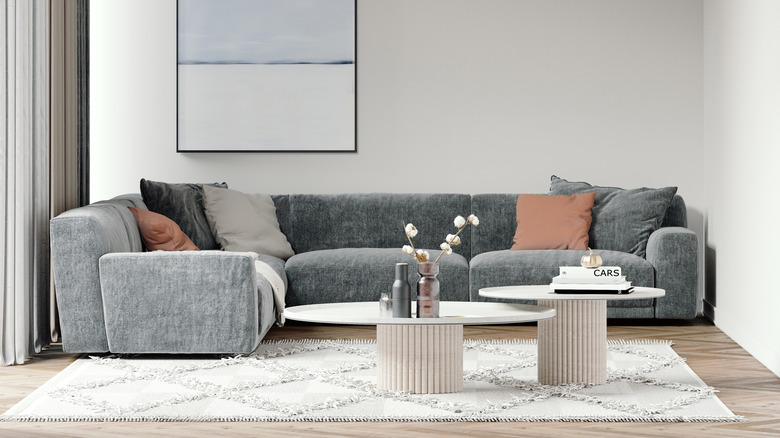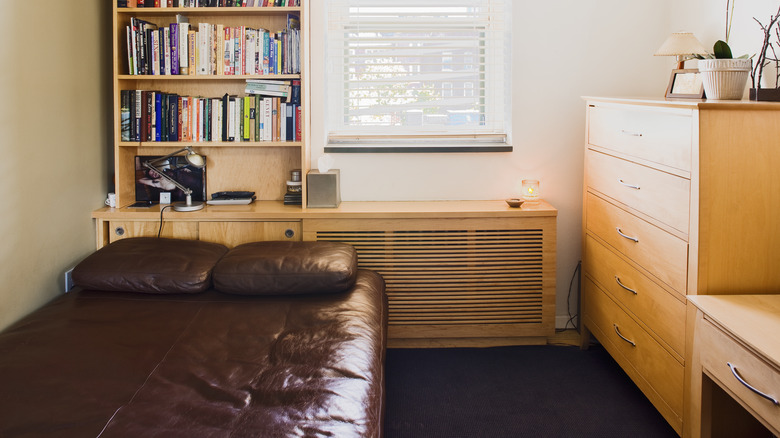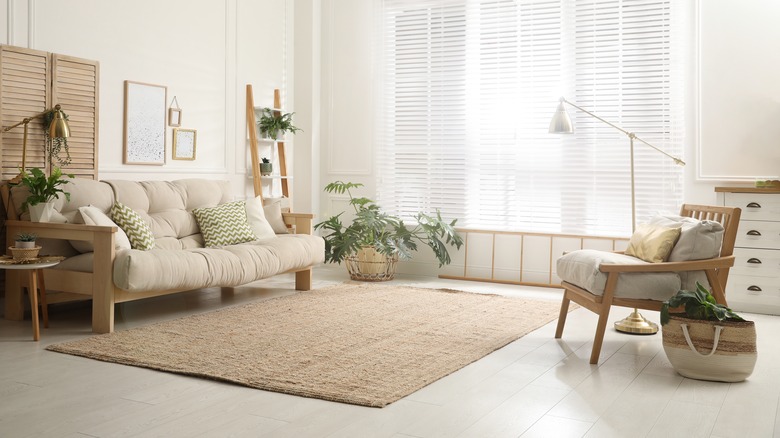The Sneaky Reason You Shouldn't Hide The Corners Of A Room
Whether you're staging a small home for sale or learning how to live in one, knowing some common interior design tricks can really help you seal the deal with your small space. Many people are aware that mirrors, light colors, and tall curtains can make rooms feel bigger, but what about the furniture layout? When you first approach a tight room, you may be tempted to push everything against the walls and fit as much storage as possible into the corners — but you shouldn't. It may seem counterintuitive, but leaving your corners open will make the space feel larger and more three-dimensional.
Essentially, by acting like you have more room than you really do, you can help the space be perceived as larger. Even in a home where every square inch of storage counts, you shouldn't overstuff your corners. Here are some ideas for what you can do instead to make small spaces feel more practical, open, and interesting.
Stuffy corners suffocate the room
While it might seem like the best layout to maximize space, stuffing corners visually shortens a room and makes it appear smaller than it really is. Instead of piling your bookshelves, desks, and other pieces up against each other and the walls, try to float them a least a few inches away from the corners. If possible, try to centralize your major furniture pieces, like the sofa and TV stand, so that they don't touch the corners. "Leaving the corners of a room open extends the buyer's view into a space," home staging expert Lori Matzke explained to Realtor, "The more open space you can see, the larger the rooms will feel."
The same rules apply to bedrooms. A corner bed may be practical, but it can feel a bit juvenile, and the arrangement makes it difficult to make the bed, change the sheets, or sleep next to a partner. Leaving a little room on both sides of the bed gives a better sense of luxury, maturity, and spaciousness in the room. Interior designer, Emily Henderson recommends providing at least 18 inches between major furniture pieces to make the space feel more inviting.
Keep corners open and minimal
How can you make good use of corner spacing without overcrowding the room? The corner is still a good place for houseplants, decorative tables, or floor lamps, which don't completely block off visual access. Instead of pushing the sofa all the way into the corner, try having a small table and a houseplant tucked beside the armrest. This creates a pocket of interest for your eye, making it seem like there is more space in the room, hidden just around the couch.
In general, it's better to arrange the room with a few larger pieces than it is to cram it full of tiny dollhouse furniture. Opt for a spacious dresser, storage ottoman, and multi-purpose furniture pieces instead of multiple tiny shelves and cubbyholes. Open shelves in a monochrome shade are another good option, especially if they match the walls. If you're really restricted on space and feel that you must put something in your corners for storage, look for furniture and storage pieces with reflective surfaces, like glass, metal, or mirror finishes. These reflective pieces will bounce light from the corner of the room, helping it appear spacious even tho you can't see the corner itself.


